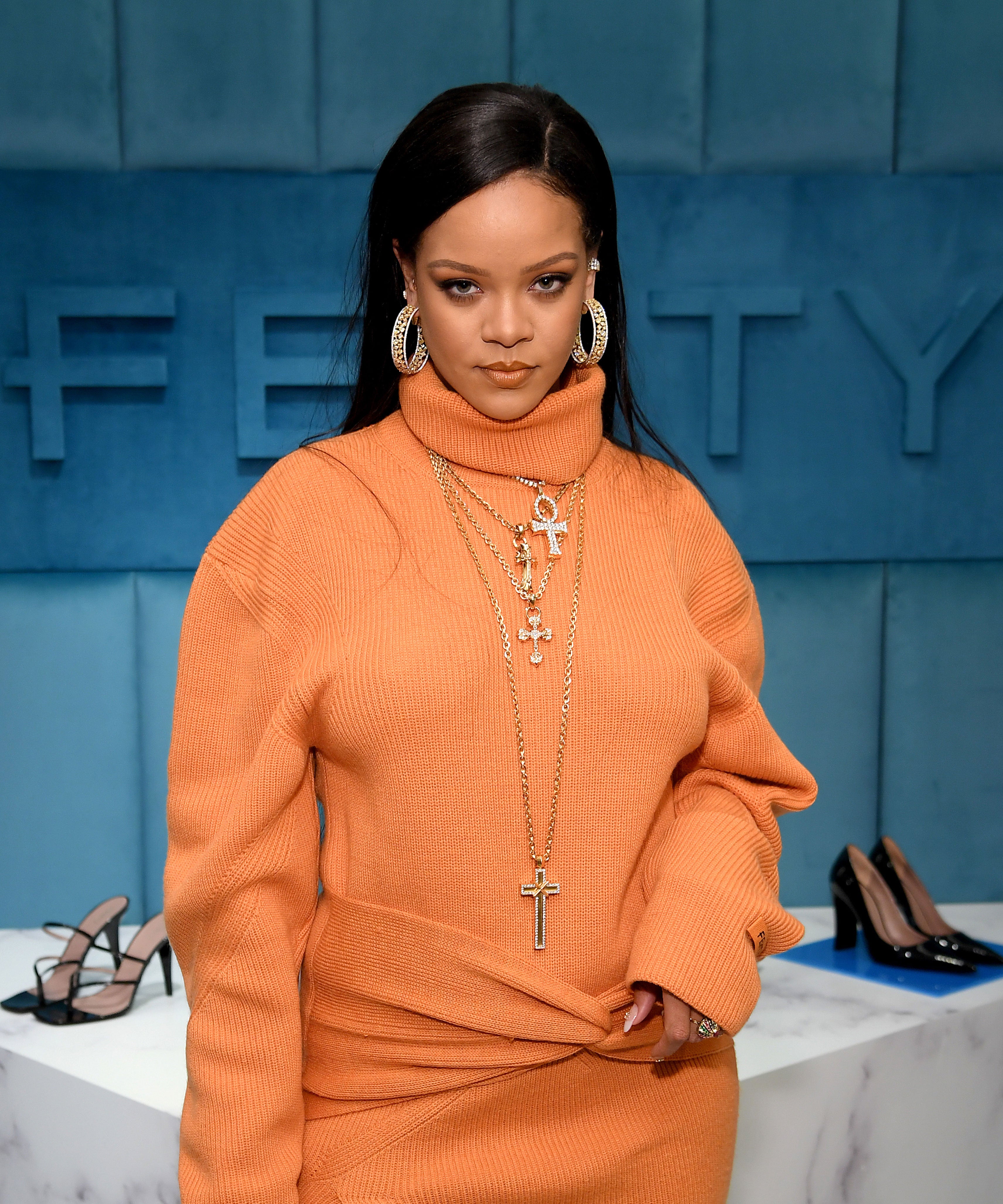Trend Forecast: What to Expect From Premium Fashion Sedgars This Year
Wiki Article
Understanding the Social Impact of Style on Society and Identification
Fashion acts as a powerful lens via which culture and identity can be checked out. It encapsulates social stories, reflecting worths and ideas across different eras. As designs evolve, they disclose shifts in social characteristics and private expression. The interplay between practice and modernity questions about authenticity and impact. What implications does this continuous makeover hold for personal identification and more comprehensive cultural discussions? The solutions may expose greater than just patterns.The Advancement of Fashion Through Background
Throughout background, style has often offered as a representation of societal modifications and social shifts. From the elaborate garments of ancient people to the streamlined silhouettes of the contemporary period, the advancement of style illustrates the dynamic interplay in between aesthetic appeals and social context. The Renaissance noted a prospering of imagination, with luxurious textiles and intricate styles signifying wide range and status. The Industrial Revolution introduced mass manufacturing, equalizing style and enabling more comprehensive access to trends.In the 20th century, movements such as the Roaring Twenties and the counterculture of the 1960s showcased fashion's ability to challenge norms and reveal uniqueness. Each years brought unique designs that mirrored dominating perspectives, from the conservative post-war aim to the strong trial and error of the punk period. This ever-evolving landscape shows that style is not merely shallow; it is a substantial lens through which to see historical progression and social worths.Fashion as a Reflection of Social Identification

Traditional Attire Value
Typical clothes acts as a vibrant expression of social identification, enveloping the history, worths, and beliefs of a neighborhood. Each garment typically tells an unique tale, showing the traditions and heritage passed down via generations. Patterns, shades, and styles regularly symbolize local differences, showcasing the diversity within social teams. In numerous cultures, standard clothes plays a vital role in events and rituals, strengthening social bonds and cumulative identity. Using such garments promotes a feeling of belonging and pride among people, attaching them to their ancestry. Additionally, conventional attire usually evokes fond memories, acting as a tip of cultural origins in the middle of globalization. This relevance highlights the long-lasting power of fashion as a tool for cultural expression and preservation in an ever-evolving globe.Global Style Impacts
As cultures come together in an increasingly globalized world, the influence of diverse style fads comes to be evident, showcasing how garments mirrors social identification. Global fashion works as a canvas where modern designs and standard concepts combine, permitting people to share their heritage while welcoming modernity (Sedgars South Africa). Designers typically draw motivation from different cultural backgrounds, resulting in collections that celebrate diversity and foster cross-cultural dialogue. Additionally, social media amplifies these trends, enabling rapid circulation and adjustment of designs worldwide. This vibrant exchange not just affects individuality but also forms social understandings of culture. Eventually, global style affects highlight the interconnectedness of societies, illustrating just how apparel not just serves aesthetic objectives however likewise acts as an effective tool of cultural expression and identity
The Duty of Fashion in Social Status and Course
Style functions as a powerful indication of social standing and class, frequently reflecting a person's economic background. Deluxe brands and developer labels are frequently deemed signs of wealth, while fads can determine social movement and impact understandings of success. Understanding the partnership between style and course offers understanding into more comprehensive social dynamics and specific identities.Fashion and Economic Course
While societal assumptions of economic course proceed to develop, the impact of clothing options in signaling social status remains considerable. Style functions as a visible marker of economic class, frequently mirroring one's social ambitions and financial resources. People might choose high-end brand names or high-fashion items to assert their standing, while others may go with thrifted or much less expensive clothes to straighten with different social identities. Sedgars Designer Fashion. This partnership between fashion and economic course forms social communications, influencing exactly how people are regarded by peers and culture at large. Additionally, style fads can bolster class distinctions, as access to specific designs usually depends on financial ways. Inevitably, garments options continue to be an effective device in guiding and sharing via the intricacies of social courseIcons of Standing
Apparel selections usually function as obvious icons of condition, showing not only personal style but also societal hierarchies. Premium brand names, lavish textiles, and unique styles differentiate individuals within social strata, producing a tangible representation of wide range and privilege. Style is imbued with social relevance, where specific items become markers of elite standing, such as developer bags or bespoke fits. These signs promote a sense of belonging amongst the upscale while all at once pushing away those outside their socio-economic circles. The exposure of these fashion choices can reinforce stereotypes and bolster course divisions, as individuals often evaluate others based upon clothes. Eventually, fashion works as an effective medium that illustrates and applies social stratification, forming assumptions and identifications within society.Patterns and Social Mobility
As societal fads shift, the role of fashion in facilitating social wheelchair ends up being progressively evident. Style usually functions as a pen of social condition, influencing assumptions and possibilities within various social strata. Individuals from reduced socioeconomic histories might take advantage of style to get acceptance and recognition, making use of style as a device for higher movement. Conversely, the expansion of fast fashion equalizes accessibility to trends, permitting broader involvement in fashion culture. Nonetheless, the exclusivity of high-end brands can enhance course divisions, producing an intricate landscape where fashion both constricts and empowers. Inevitably, the interplay between fashion and social wheelchair highlights the nuanced partnership between identity, economic condition, and social assumptions, forming just how individuals navigate their social environments.Fashion Trends and Societal Motions
Fashion patterns usually emerge as reflections of societal movements, illustrating the complex interplay between culture and personal expression. Throughout history, various patterns have encapsulated the spirit of their times, functioning as aesthetic pens of social adjustment. The rise of punk fashion in the 1970s symbolized disobedience versus authority, while the bohemian designs of the 1960s resembled a mission for flexibility and individuality.Moreover, motions such as feminism and environmentalism have influenced style selections, leading to the appeal of sustainable brands and gender-neutral clothes. These patterns serve not only to express individuality but also to interact uniformity with broader social reasons. As individuals take on specific styles, they typically align themselves with the ideas and worths represented by those patterns, strengthening the connection in between style, culture, and social advocacy. In this way, style comes to be a powerful device for both private expression and collective identification.The Influence of Globalization on Style Options
Globalization has greatly transformed style options, enabling the smooth exchange of styles and social influences throughout borders. This interconnectedness has actually resulted in an abundant tapestry of fashion that mixes traditional garments with modern styles from various societies. As a result, customers now have accessibility to a wider series of choices, allowing them to reveal their individuality while all at once accepting international trends.Fashion brands have additionally adapted to this globalization, usually integrating varied elements into their collections to interest an international market. Furthermore, social media systems have played an essential duty in amplifying these influences, enabling fads to spread quickly and be taken on worldwide.However, this social exchange questions concerning credibility and appropriation, as distinct designs might shed their initial importance when commodified. Eventually, globalization has actually improved style choices, fostering a dynamic atmosphere where social discussion and individual expression coexist, albeit with complexities that require factor to consider.Lasting Style and Moral Factors To Consider
While the apparel industry has long been connected with fast manufacturing and intake, an expanding focus on sustainability and moral factors to consider is improving its landscape. Customers are significantly knowledgeable about the social and environmental consequences of their clothes options, triggering brand names to embrace more responsible methods. This change includes making use of Sedgars Designer Fashion eco-friendly materials, reducing waste through recycling, and ensuring reasonable labor conditions.Sustainable style supporters say that the sector's traditional version, characterized by fast style, adds to substantial eco-friendly damages and exploitation. In feedback, lots of business are executing transparent supply chains and focusing on ethical sourcing.Furthermore, partnerships between designers and ecological companies highlight the capacity for style to foster positive modification. By advertising mindful consumption, the movement in the direction of lasting fashion urges consumers to review their buying behaviors, bring about a much more mindful technique to personal design and identity. This evolution indicates an important moment in redefining style's function within society.Personal Design and Individual Expression

Regularly Asked Questions
Just How Does Fashion Impact Mental Wellness and Self-Esteem?
Style greatly influences psychological health and self-confidence by forming individual identity and self-perception. Favorable self-expression via clothes can enhance confidence, while societal stress might result in anxiousness and discontentment, influencing total well-being and self-respect.
What Role Does Social Media Site Play in Current Fashion Trends?
Social media site acts as a powerful catalyst for present fashion trends, enhancing presence and ease of access. Systems help with instant sharing of styles, producing rapid shifts in customer choices and influencing developers to adjust to progressing public preferences.Can Style Promote Inclusivity and Variety Efficiently?
Fashion can properly advertise inclusivity and diversity by showcasing a range of body identifications, types, and cultures. This method not just broadens representation however likewise cultivates acceptance, making it possible for individuals to express themselves authentically within the fashion landscape.Exactly How Do Gender Standards Impact Fashion Choices Today?
Sex standards substantially form contemporary fashion choices, frequently determining designs regarded suitable for various sexes. Premium Fashion Sedgars. This influence can enhance traditional assumptions or challenge them, as people browse personal expression within societal restrictions and progressing interpretations of sexWhat Is the Future of Style in a Digital World?
The future of style in an electronic world shows up progressively linked with technology, as virtual fact, synthetic knowledge, and on-line systems form consumer experiences, difficulty conventional retail, and redefine personal expression via ingenious style and sustainable practices. The Industrial Change introduced mass manufacturing, democratizing fashion and permitting wider access to trends.In the 20th century, activities such as the Roaring Twenties and the counterculture of the 1960s showcased style's capability to test standards and reveal originality. Fashion commonly offers as a marker of social condition, affecting perceptions and chances within various social strata. Conversely, the spreading of rapid fashion democratizes access to trends, allowing wider engagement in fashion culture. The increase of punk style in the 1970s represented rebellion against authority, while the bohemian styles of the 1960s echoed a quest for freedom and individuality.Moreover, movements such as feminism and environmentalism have influenced style selections, leading to the popularity of sustainable brands and gender-neutral clothing. In addition, social media platforms have actually intensified varied representations of design, enabling individuals from various backgrounds to showcase their style options.Report this wiki page